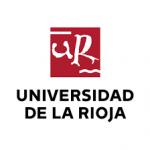Abundance and phenotypic diversity of Escherichia coli isolates with diminished susceptibility to expanded-spectrum cephalosporins in faeces from healthy food animals after slaughter
Veterinary Microbiology publica este artículo de investigación
10 de marzo de 2007
Antimicrobial resistance (AR) is an increasing phenomenon but its quantitative estimation remains controversial. The classical resistance percentage approach is not well suited to detect either emergence or low levels resistance. One option is to shift the focus from strains to hosts. This approach is applied to test for phenotypic diversity associated with diminished susceptibility to expanded-spectrum cephalosporins (DSESC) in faecal Escherichia coli from healthy food animals in Spain. We performed E. coli enumeration in faecal samples of broilers (82 pooled samples) and pigs (80 pooled samples) at the slaughterhouse level, using Coli-ID plates alone and supplemented with cefotaxime at two levels (1 and 8 microg/ml). Antimicrobial susceptibility of isolates was tested by the agar diffusion method. Clustering was carried out using these numerical values and Ward and UPGMA methods. When using plates supplemented with 1 microg/ml of cefotaxime for DSESC E. coli detection, 93% (76/82) of broiler pooled samples and 36% (29/80) pig pooled samples tested positive. When using 8 microg/ml of cefotaxime, 67% (55/82) of broilers and 13% (10/80) of pigs were positive. Nevertheless, the relative abundance of this phenotype was low in both animal species (range 0-4.3%). Irrespective of the clustering method (Ward or UPGMA), a noticeable phenotypic diversity was detected, especially from the plates containing 1 microg/ml of cefotaxime. We concluded that: (a) E. coli with phenotype DSESC are common in broilers and pigs but are less frequent in pigs, and (b) the host approach is the most appropriate method for antimicrobial resistance assessment when null or very low levels of antimicrobial resistant bacteria are expected
Moreno MA., Teshager T., Porrero MC., Garcia M., Escudero E., Torres C. y Dominguez L..
 | Departamento de Sanidad Animal. Facultad de Veterinaria. Universidad Complutense (UCM). |
 | Servicio de Zoonosis de Transmisión Alimentaria y Resistencia a Antimicrobianos (ZTA). Centro de Vigilancia Sanitaria Veterinaria (VISAVET). Universidad Complutense (UCM). |
 | Área de Bioquímica y Biología Molecular. Universidad de La Rioja (UR). |
